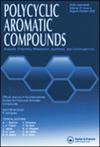Rate of Horizontal Spread of Fluorene in a Sandy Loam under Natural Environment
IF 2.4
3区 化学
Q2 CHEMISTRY, ORGANIC
引用次数: 0
Abstract
Rate of horizontal movement of a pollutant such as polycyclic aromatic hydrocarbons in soil plays a major role in spread of pollutants in the segments of the environment. However, the study regarding this aspect is not widely reported. In the present work, the rate of horizontal spread of Fluorene in soil is determined in an experiment spread over a year under natural environment. Known amount of the hydrocarbon was added to a soil at a particular point, extraction of the same was done later on at definite time interval at definite distances from the point of application and quantitative determination was done by HPLC analysis of the extract. Eleven number of important physico-chemical parameters of the soil sample were determined/calculated in order to know the quality of the soil. The values of parameters are in agreement to the characteristics of a good soil. The experimental soil is a mild acidic sandy loam. It has been found that one-year time is sufficient for the applied quantity of the hydrocarbon to spread itself uniformly to attain a concentration, which is at par with natural concentration of the hydrocarbon in the experimental soil. Studies on kinetics of the reaction imply that the reaction occurs in different phases, rate constants being gradually increased with time. The positive influence of increase in ambient temperature and rainfall on disappearance of the hydrocarbon is seen in the experiment. It has been found that the most probable speed of the hydrocarbon for horizontal movement is 3.75 cm per month in the experimental soil.
自然环境下芴在沙质壤土中的水平扩散速率
污染物(如多环芳烃)在土壤中的水平移动速度对污染物在环境中的扩散起着重要作用。然而,有关这方面的研究报道并不多。本研究在自然环境下进行了为期一年的实验,测定了芴在土壤中的水平扩散速率。在特定位置向土壤中添加已知量的碳氢化合物,随后在距离添加点一定距离的特定时间间隔内提取相同的碳氢化合物,并通过高效液相色谱法对提取物进行定量测定。为了了解土壤的质量,对土壤样本的 11 个重要物理化学参数进行了测定/计算。参数值符合良好土壤的特征。实验土壤为弱酸性砂质壤土。研究发现,一年的时间足以让施用的碳氢化合物均匀扩散,达到与实验土壤中碳氢化合物天然浓度相当的浓度。对反应动力学的研究表明,反应发生在不同阶段,速率常数随时间逐渐增加。实验表明,环境温度和降雨量的增加对碳氢化合物的消失有积极影响。实验发现,在实验土壤中,碳氢化合物最有可能的水平移动速度是每月 3.75 厘米。
本文章由计算机程序翻译,如有差异,请以英文原文为准。
求助全文
约1分钟内获得全文
求助全文
来源期刊

Polycyclic Aromatic Compounds
化学-有机化学
CiteScore
3.70
自引率
20.80%
发文量
412
审稿时长
3 months
期刊介绍:
The purpose of Polycyclic Aromatic Compounds is to provide an international and interdisciplinary forum for all aspects of research related to polycyclic aromatic compounds (PAC). Topics range from fundamental research in chemistry (including synthetic and theoretical chemistry) and physics (including astrophysics), as well as thermodynamics, spectroscopy, analytical methods, and biology to applied studies in environmental science, biochemistry, toxicology, and industry. Polycyclic Aromatic Compounds has an outstanding Editorial Board and offers a rapid and efficient peer review process, as well as a flexible open access policy.
 求助内容:
求助内容: 应助结果提醒方式:
应助结果提醒方式:


